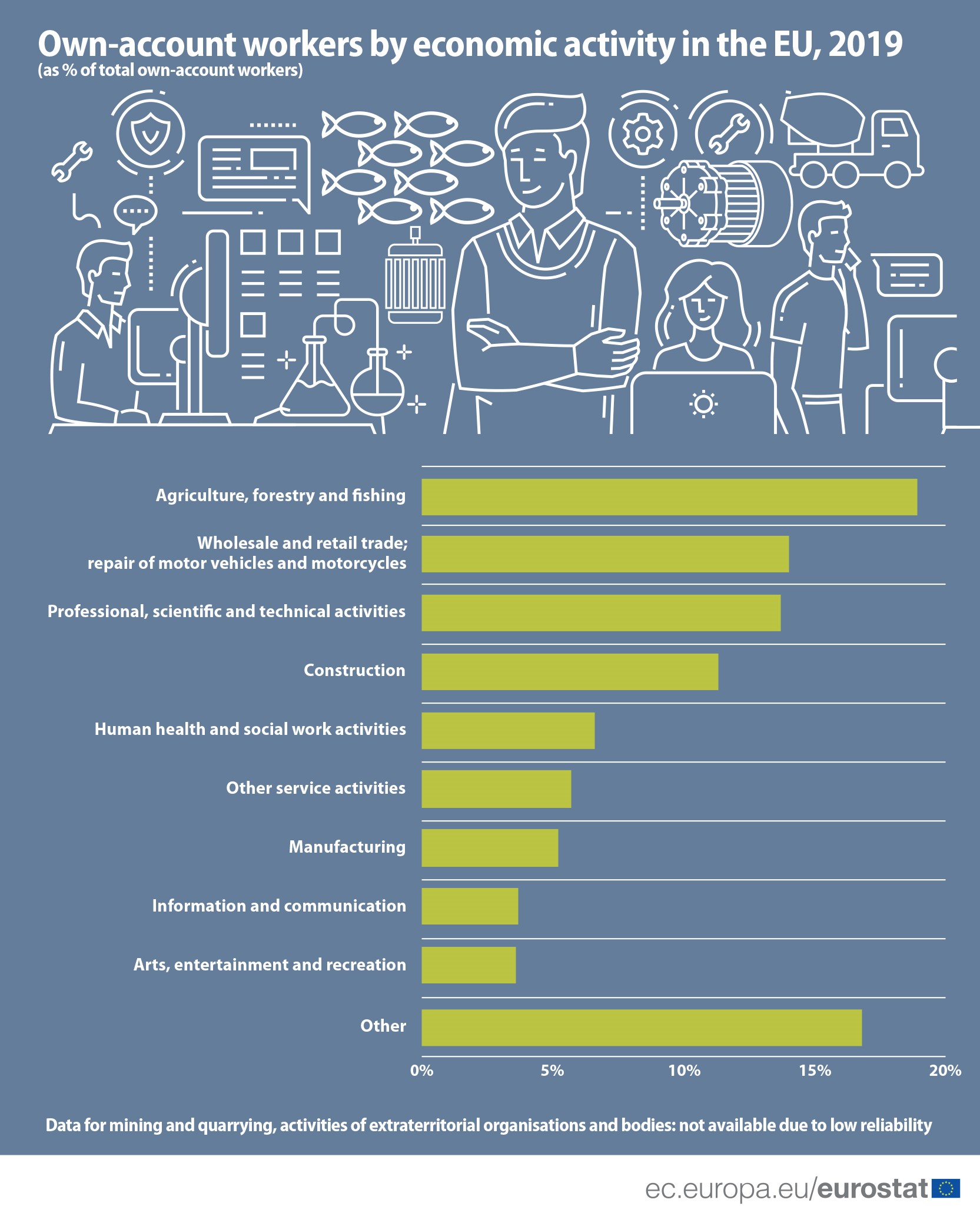In 2019, 18 million people aged 20 to 64 in the European Union (EU) were self-employed without employees, otherwise known as own-account workers. They accounted for 9% of the total employment. While the self-employed, whether seeking it or not, benefit from greater autonomy and flexibility at work, at times like these, the self-employed might be among those most economically affected by the COVID-19 pandemic.
In 2019, almost one-fifth of own-account workers worked in ‘agriculture, forestry and fishing’ (19%). This was followed by own-account workers who worked in the ‘wholesale and retail trade, repair of motor vehicles and motorcycles’ and ‘professional, scientific and technical activities’ (both 14%), ‘construction’ (11%) and ‘human health and social work activities’ (7%).
Source datasets: lfsa_esgan2 and lfsa_esgais
The most common occupation among own-account workers was ‘professionals’ (24%), followed by ‘skilled agricultural, forestry and fishery workers’ (19%), ‘service and sales workers’ and ‘craft and related trade workers’ (both 16%) as well as ‘technicians and associate professionals’ (14%).
Share of own-account workers highest in Greece, lowest in Denmark and Luxembourg
Among the EU Member States, Greece recorded the highest share of own-account workers (21% of the total employment) in 2019, followed by Italy (15%), Poland and Romania (both 14%).
By contrast, the lowest shares were recorded in Denmark and Luxembourg (both 4%), followed by Germany and Sweden (both 5%).
Notes:
- The figures were collected through the EU Labour Force Survey.
- In this news item, economic activities are presented as classified under NACE Rev.2. Data for ‘mining and quarrying’ and ‘activities of extraterritorial organisations and bodies’ are not available due to low reliability.
- Occupations are presented as classified under ISCO-08. Data for ‘armed forces occupations’ are not available due to low reliability.
- The European Union (EU) includes 27 EU Member States. The United Kingdom left the European Union on 31 January 2020. Further information is published here.
To contact us, please visit our User Support page.
For press queries, please contact our Media Support.


